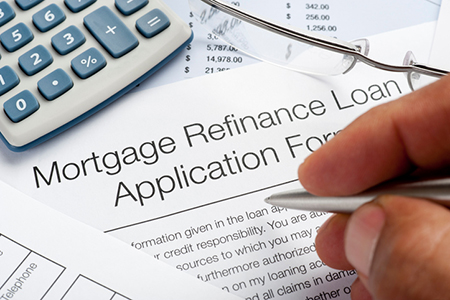
How to Prepare for a Home Loan Refi
Just as you want to put your best financial foot forward when applying for a mortgage to buy your first home, you also want to prepare your finances before refinancing a home loan.
A mortgage refi can pay for a kitchen or bathroom remodel, for example, or for something as simple as replacing a home’s windows. A home equity line of credit or a home equity loan are two common ways to refinance, and preparing for the process can make the approval process smoother. You could even qualify for a lower interest rate on your home loan by improving your credit score.
Here are some things to do before applying for a mortgage refinance:
Check Your Credit Report
Federal law allows people to check their credit reports for free each year. Since there are three major credit bureaus—Experian, Equifax and TransUnion—consumers can check with each agency every four months for free.
Fix any errors you find, such as late payments that you have proof of paying on time. Eliminating any errors can improve your credit score and allow you to borrow more money at a lower interest rate.
Pay Down Debt and Save Cash
If your credit card balances are near your credit limits, pay the debt down so that it’s no more than 30 percent of your credit limit. Lenders don’t like to see credit cards that are maxed out or close to it, and may consider you a credit risk if you’re using most of your available credit.
Keep your credit card balances low for at least a few months before applying for a home loan refinance.
Also save as much money as you can in your savings account as a way to show that you can weather a financial storm such as a job loss or major medical cost. Having six months or more of expenses saved is a good goal.
Low LTV
If you owe more than 80 percent of your home’s value, then you may be too high to qualify for a loan refi—or at least at a good interest rate.
A loan-to-value ratio, also called LTV ratio, is a lending risk assessment that was done before you applied for your original home loan. The more money you put toward a down payment, the lower the ratio and the lower risk you are considered to be. Buying mortgage insurance can help offset a high risk.
As part of a home loan refinance, a lender will order an appraisal of your home’s value. Your real estate agent can help you prepare for this by giving you a rough estimate based on recent home sales in your area.
If you put down 20 percent toward the purchase price of your home, for example, then you owe 80 percent of its value, giving you an LTV of 80 percent. You could have more than 20 percent equity, however, if your home’s value has risen. If home values have dropped in your neighborhood, then you may want to rethink refinancing for now.



